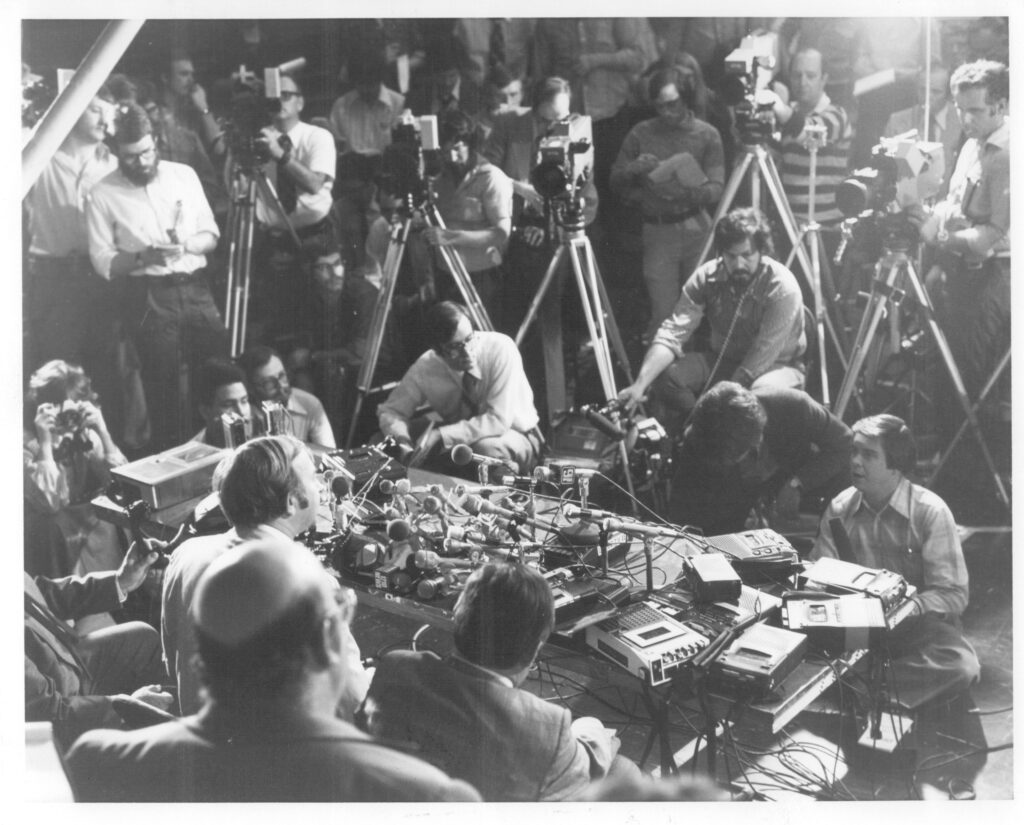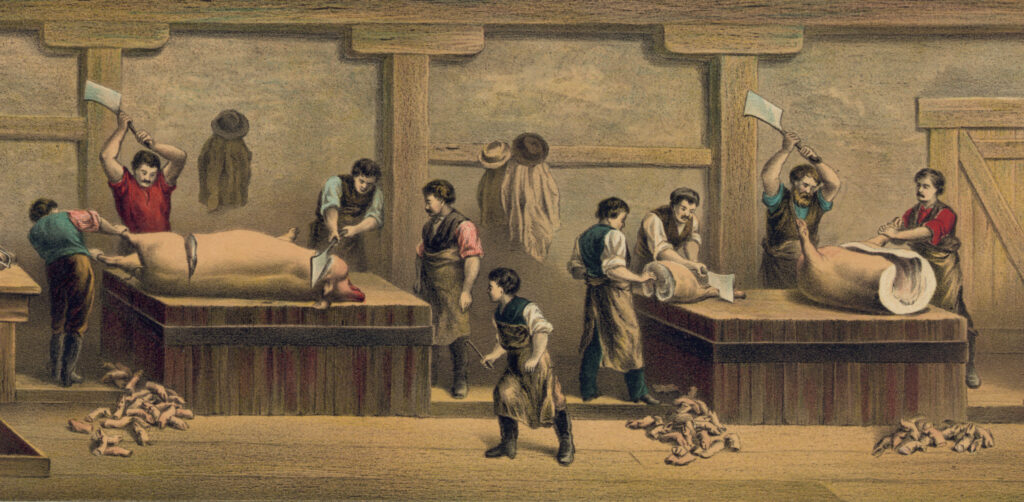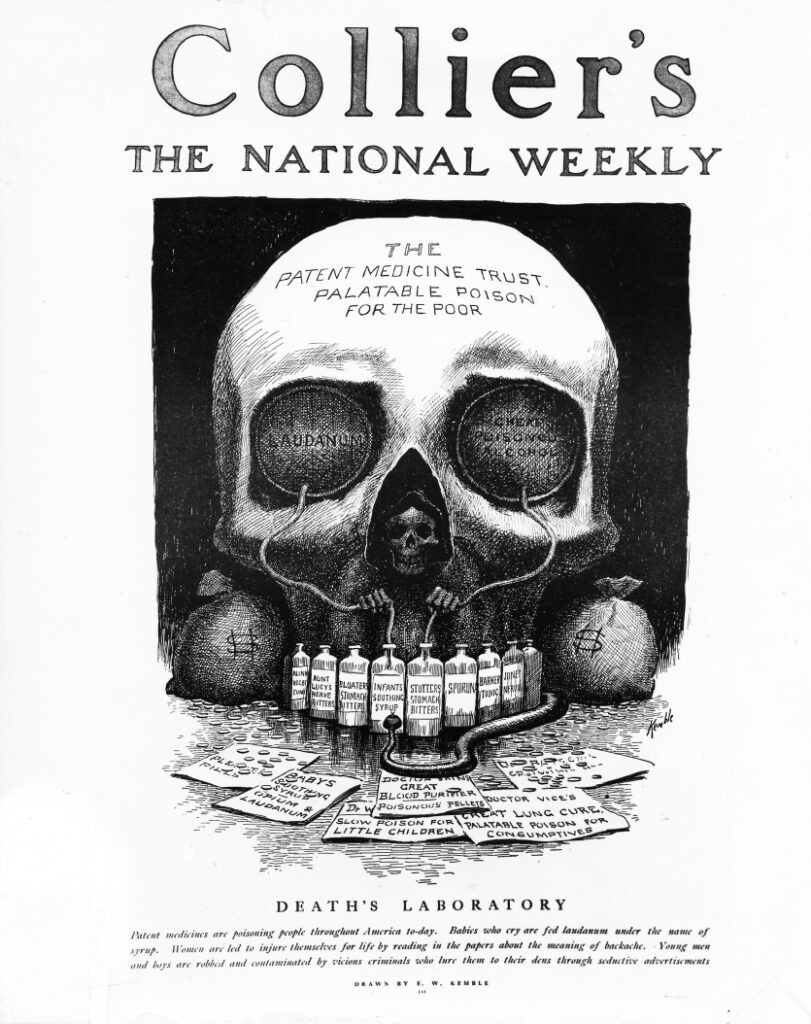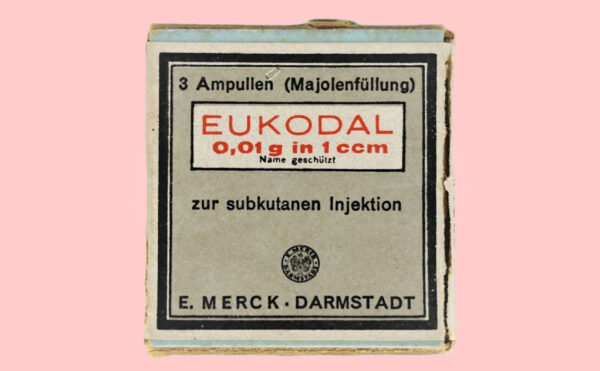Conservative-radio shock jock Rush Limbaugh doesn’t think much of environmentalists. One day in 2009 Limbaugh was comparing environmental advocates to jihadists who strapped suicide bombs to children instead of sacrificing their own lives for their causes. Then he pivoted to another target: Andrew Revkin, a New York Times reporter who covered climate change and other environmental issues.
Revkin had written a blog post and commented publicly about several studies that contended that better access to contraception in developing countries would help slow climate change by limiting population growth. In response Revkin mused that the next logical step might be awarding carbon credits to couples with small families—an idea he later called a thought experiment, not an endorsement of the idea.

“This guy from the New York Times, if he really thinks humanity is destroying the planet, humanity is destroying the climate, that human beings in their natural existence are going to cause the extinction of life on Earth—Andrew Revkin, Mr. Revkin, why don’t you just go kill yourself and help the planet by dying?” Limbaugh said to millions of listeners.
“This might be funny, in a sad way, if it weren’t for the fact that my mailbox is already heaped with hate mail,” Revkin wrote on his blog. After Revkin demanded an apology, Limbaugh replied a few days later, “I do not advocate death on this program. I do not advocate control over anybody else’s life-”— unlike Revkin, Limbaugh was implying.
Revkin’s experience was not unique. Once a low-profile beat, science reporting has become in recent decades a forum for controversy. Many science journalists regularly field stinging criticism of their work, some of it harshly personal. No one welcomes insults or persistent harassment, but most experienced journalists say rude feedback is part of the job.
Some attacks on science reporting and reporters are based on critics’ worldviews or values: climate change does not exist, government regulation infringes on personal freedoms, vaccines damage health. Others challenge reporting that threatens powerful industries’ bottom lines. Whatever the motive, pressure on science journalism reflects changing attitudes toward the underlying science. Scientific evidence is not treated as objective, impartial knowledge but as just one more kind of information. The result is that doubters challenge mainstream scientific views with their own counternarratives.
Is civil discourse about science controversies still possible? The jury is out. Last fall Popular Science terminated its online comment forums after editors concluded that rude attacks could make readers more likely to mistrust the scientific findings reported. Other journalists engage with critics and try to get them to consider evidence. What’s clear is that over the past century a once-studious beat has become a much noisier place.
Evolution of Science Reporting
Media historians date the birth of the science beat to Carr Van Anda’s tenure as managing editor of the New York Times from 1904 to 1925. Under Van Anda, who studied physics and astronomy in college, the newspaper covered stories including the opening of King Tut’s tomb and controversies over teaching evolution in schools. When the newspaper reprinted a lecture by Albert Einstein, Van Anda found and corrected a mathematical error in one of the equations (after consulting Einstein, who had copied the equation incorrectly from a blackboard).
Elsewhere, Progressive-era muckrakers exposed products that threatened consumers’ health. Upton Sinclair’s The Jungle (1906) described meatpackers disguising and processing spoiled food. In “The Great American Fraud,” a series for Collier’s, Samuel Hopkins Adams attacked the thriving patent-medicine industry (and media outlets that published patent-medicine advertisements without verifying their claims). Describing a purported antimicrobial concoction called Liquozone, whose manufacturer said it consisted of “liquid oxygen,” Adams wrote, “Liquid oxygen doesn’t exist above a temperature of 229 degrees below zero. One spoonful would freeze a man’s tongue, teeth, and throat to equal solidity before he ever had time to swallow. If he could, by any miracle, get it down, the undertaker would have to put him on the stove to thaw him out sufficiently for a respectable burial.” Accounts like this helped convince President Theodore Roosevelt to sign the Meat Inspection Act and the Pure Food and Drug Act in 1906.

Early science reporting sought to correct misinformation and promote respect for scientists. In 1922 the Science Service, funded by publisher E. W. Scripps and California zoologist William Emerson Ritter, launched the Science News-Letter, a report on current research that still exists today as Science News. Scripps had no college education, but he revered scientists, calling them “so blamed wise and so much the creatures of reason rather than instinct that they cannot comprehend why God made nearly all the rest of mankind so infernally stupid.” Two of the first Pulitzer Prizes for science reporting were awarded for coverage of meetings—the American Association for the Advancement of Science conference in 1922 and Harvard University’s 1936 Tercentenary Conference of Arts and Sciences.
In those days reporters rarely questioned scientists’ statements. In 1924 five workers at a Standard Oil refinery in New Jersey died after being exposed to tetraethyl lead, which they were using to manufacture a new product: leaded gasoline. New York City papers covering the story repeated industry scientists’ statements that the plant was safe and that motorists were not at risk from what they called simply “Ethyl.”
Early science reporting sought to correct misinformation and promote respect for scientists.
In 1945 New York Times reporter William Laurence became the Manhattan Project’s official historian while remaining on the newspaper’s payroll—an arrangement that would be an unthinkable conflict of interest today. Laurence wrote press releases for the War Department and was allowed to accompany scientists to the Trinity nuclear test in New Mexico. In an article published after Japan’s surrender Laurence described the Trinity explosion: “It was as though the earth had opened and the skies had split. One felt as though he had been privileged to witness the Birth of the World—to be present at the moment of creation when the Lord said: Let There Be Light.” The following year Laurence received a Pulitzer Prize for his coverage of the atomic-bomb program.
New Frontiers
Federal investment in research and development after World War II generated a flow of science news, from discovery of the structure of DNA and production of a polio vaccine to thermonuclear weapons and the space race. Much science reporting was upbeat, gee-whiz coverage, but some stories explored social problems. Urban air pollution received wide coverage, especially in Los Angeles, where residents’ eyes burned on bad-air days and surrounding hills often were wreathed in brown haze. Articles with titles like “Los Angeles: Forgotten Sun” (Newsweek, 1946), “Blight on the Land of Sunshine” (Life, 1954), and “Los Angeles Battles the Murk” (Saturday Evening Post, 1959) explained how industrial and automobile emissions blended to form smog and chronicled debates over ways to clear the air.
Major corporations recognized that scientific findings could lead to new laws and regulations. In 1953 the four largest U.S. tobacco companies hired public-relations firm Hill and Knowlton to create a campaign rebutting studies that showed cigarette smoking caused cancer. A centerpiece of this effort, the Tobacco Industry Research Committee, generated a stream of reports over the next 50 years designed to muddy the debate. (“Doubt is our product since it is the best means of competing with the ‘body of fact’ that exists in the minds of the general public,” a Brown and Williamson executive wrote in a 1969 memorandum.) Committee spokesmen argued that scientific evidence of harm from smoking was unclear and urged the media to publish balanced stories that emphasized uncertainties in the research.
In June 1962 the New Yorker published three long excerpts from Silent Spring, biologist Rachel Carson’s sweeping attack on DDT and other organochlorine pesticides. In Carson’s view pesticides had some legitimate uses but were being applied in excessive quantities, leaving residues behind that threatened wildlife and human health. Chemical manufacturers reacted quickly. Velsicol, a Chicago company that produced pesticides, pressured Carson’s publisher unsuccessfully to halt publication of her book. Other companies countered with public-relations campaigns touting the safety of pesticides. Some critics attacked Carson’s character, calling her a Communist sympathizer or arguing (wrongly) that she wanted to ban all chemical insecticides. The backlash did not derail Silent Spring, which received mostly positive reviews and became a best seller when it was published in September 1962.
Much science reporting was upbeat, gee-whiz coverage, but some stories explored social problems.
Reporting on environmental issues increased through the 1960s as Americans became more concerned about air and water pollution and other downsides of growth. In 1967 two newspapers won the Pulitzer Prize for Public Service for environmental reporting: the Milwaukee Journal for a series on water pollution and the Louisville Courier-Journal for coverage of the strip-mining industry in Kentucky. Both series spurred the passage of tighter state regulations. In 1969 the New York Times created a permanent environmental beat, and other newspapers soon followed.
Congress enacted a flurry of major health and environmental laws in the 1970s, including an expanded Clean Air Act (1970), the Safe Drinking Water Act (1974), and the Clean Water Act (1977). Congress also established new agencies to protect public health and safety, including the Environmental Protection Agency, the Occupational Safety and Health Administration, and the Consumer Product Safety Commission. New regulations followed, including bans on DDT, polychlorinated biphenyls, and lead paint.
All of these measures drew on scientific research to varying degrees. Industries often challenged how that evidence was interpreted and strove to rebut negative press accounts. When in 1981 journalist Bette Hileman joined Environmental Science and Technology, a journal published by the American Chemical Society (ACS), her first article examined problems that could result from farmers’ overuse of herbicides, such as the evolution of resistant “superweeds.” “The agricultural department of a major chemical company sent someone to the magazine to try to get me fired,” says Hileman, who now works as a freelance writer, editor, and photographer. “I had to defend every point in the story. The magazine stood behind me, but it was a scary experience.”

In 1984 Hileman moved to Chemical and Engineering News, a weekly magazine also published by the ACS, where she wrote and edited articles about the environment, health, and government policy for 24 years. Many of her stories drew strong responses. A 1988 article on debates over fluoridating community water supplies generated more than 200 letters to the editor, including one from C. Everett Koop, surgeon general at the time, who believed Hileman had given too much weight to arguments against fluoridation. “Anything that has policy implications will get a response,” says Hileman. “But I was bored if I wasn’t covering issues that were relevant to policy.”
Not all respondents to scientific controversies Hileman covered were driven by financial interests. Many opponents of fluoridation believed that the process was harmful or that its purported benefits were unproven, and some saw it as government interference in Americans’ personal lives. Antivaccine campaigns reflected similar views. Arguments for teaching about creationism were based on religious beliefs.
Other science topics were less contentious. “Some subjects don’t threaten people’s worldviews. You can write about the universe expanding indefinitely, and no one will flame you,” says Bill Kovarik, a professor of communications and media history at Radford University in Virginia.
Science Denial Online
For more than 50 years industries have pushed back hard against unfavorable coverage, while the explosion of digital journalism starting in the mid-1990s has turned up the volume, creating an online culture where extreme opinions often drown out thoughtful conversation. At the same time, many newspapers and television stations have dropped or reduced their science coverage in response to budget pressure. So while there are fewer science reporters, they now face more competition from antiscience sources. Contentious subjects include
- Climate change: As the Clinton administration began discussing ways to limit global climate change in the mid-1990s, fossil-fuel companies and conservative advocacy groups poured millions of dollars into campaigns designed to discredit scientific findings that human-generated greenhouse-gas emissions were altering Earth’s climate.
- Evolution: After the antievolutionist movement lost a key Supreme Court decision on the constitutionality of teaching creationism in public schools (Edwards v. Aguillard, 1987), its advocates proposed the concept of intelligent design, which pitted a pseudoscientific paradigm against the theory of evolution, and began lobbying at the local level for schools to “teach the controversy”—that is, to tell students that evolution was not the only credible explanation for the origins of life on Earth.
- Vaccine safety: Galvanized by a 1998 article in the Lancet (later retracted) that hypothesized that the measles, mumps, and rubella vaccine could cause autism, antivaccine activists petitioned the Food and Drug Administration to remove an organomercury compound called thimerosal from vaccines. Thousands of families filed claims with the federal Vaccine Injury Compensation Fund over injuries they argued were caused by childhood vaccines.
Advocates on each of these issues challenged prevailing scientific views, magnified disagreements among scientists, and sometimes attacked mainstream scientists’ motives. Many reporters, under pressure to include opposing voices in their articles, failed to make clear that these dissenting views were challenging years of scientific thinking or to explain that the existence of controversy did not mean prevailing wisdom was wrong.
One peer-reviewed study that analyzed coverage of climate change in four major U.S. newspapers from 1988 through 2002 found that more than half of the articles gave roughly equal attention to the idea that human activities were contributing to global warming (the view increasingly supported by climate scientists) and to arguments that natural variations in Earth’s climate system could explain warming trends (a minority view advanced by “climate skeptics,” many of whom were funded by industry). The authors concluded that journalists’ long-held norms of balanced reporting led them to give undue weight to arguments that minimized the urgency of climate change.
At the same time, changes in the media industry gave antiscience advocates more ways to make themselves heard. Digital publishing made it easy and inexpensive for anyone with a computer to create a blog and launch opinions into cyberspace. Cable television networks multiplied in the 1980s and 1990s, competing with the major networks for audiences and allowing viewers to choose channels with perspectives that reinforced their own opinions, including extreme views. As newspapers and magazines started publishing online, readers could react instantly to stories by posting in online comment forums or e-mailing reporters.
As public debates grew louder, they also became ruder. Online comment forums fostered name-calling and insults. Many bloggers found that publishing outrageous statements and nasty critiques helped them get attention and build audiences. Some commenters became known as “trolls”—people who habitually started arguments and posted inflammatory remarks on Internet comment sites.
‘If you write a story quoting a scientist whose conclusions companies don’t like, you’d better be prepared for them to come after you.’
“I got a lot of very distasteful, rude comments from science deniers,” says Hileman of her time at Chemical and Engineering News. In a typical example S. Fred Singer—an emeritus professor of environmental science at the University of Virginia and a prominent climate skeptic—accused Hileman in 1999 of “selective use of data and interviews with selected scientists” in a series of articles on climate change and declared that C&EN should assert “adult supervision” over Hileman’s work.
The Wild West atmosphere persists today. “Only one e-mail has threatened me in a way that made me nervous enough to contact my company’s security office, but I get many comments that are nasty and usually personal,” says Seth Borenstein, a science reporter for the Associated Press. “They almost always come when I write about climate change, although I have one correspondent who focuses on UFOs.”
Reporters who cover major industries at the regional level also receive significant pushback. “There’s a huge amount of corporate PR around issues like hydraulic fracturing,” says Ken Ward, a reporter for the Charleston Gazette in West Virginia who has covered the Appalachian coal industry for nearly 20 years. “If you write a story quoting a scientist whose conclusions companies don’t like, you’d better be prepared for them to come after you.”
Cristine Russell, president of the Council for the Advancement of Science Writing, isn’t surprised that attackers focus on experienced, talented reporters. “Science reporters, especially the good ones, take apart the science and think about the preponderance of evidence to say what science shows,” she says. “They’re less easily attacked with press releases and sound bites, so opponents go after both the scientists and the messengers.”
Talking Back
Science journalists may never drown out their attackers. But some say it’s important to respond to critics who might listen and to promote civil discussion of science controversies.
“At first, personal attacks bother you. Then you get used to them and realize that you’re just doing your job. Now I see them as indicators of how far a story has gotten out,” says Borenstein, who receives feedback by e-mail and Twitter. “I like to have give-and-take with readers. If they are civil and don’t make personal attacks, I’ll often reply and send back data. That’s where you separate thoughtful people from the ones who pick and choose what they want to believe.”
In addition to reporting for the Charleston Gazette, Ward writes a blog for the newspaper called “Coal Tattoo” (named for a country-music song) that focuses on mountaintop-removal mining, mine safety, and climate change. Ward spends a significant amount of time moderating and responding to comments on his blog, including antiscience messages.
“A lot of reporters ignore those views, but you do that at your peril,” says Ward. If journalists don’t counter antiscience claims, he notes, the credibility of their reporting can be undermined in readers’ eyes. “I feel a certain responsibility to respond and say, ‘No, that’s not what the science says, and here are links to six studies that say so.’”
Some journalists have more license to push back. In 2013 Slate published a story criticizing environmental activist Robert F. Kennedy Jr.’s outspoken assertions that vaccines cause autism. (Kennedy had championed the antivaccine movement for a decade and published several articles arguing that vaccines were unsafe, including one that Salon removed from its archives after mistakes in the story were pointed out.) In response Kennedy called managers at Slate and demanded to speak to an editor.
“It was clear that he had many friends in media and was willing to say that we were publishing lies,” says Laura Helmuth, Slate’s science and health editor. Helmuth took a long phone call from Kennedy, then wrote an article describing how Kennedy had misrepresented scientists’ views and accused federal health agencies and medical organizations of lying to the public about vaccine safety.
“People with antiscientific missions are very serious about spinning the media,” says Helmuth. “They try hard, and frequently journalists will take them seriously or include their perspective in stories where it’s inappropriate. Their long-term objective may be converting people, but as an intermediate goal they try to make people pause and question the actual science. And in this case someone with a lot of power was promoting a very dangerous position.”
Radford University’s Kovarik thinks it’s important for journalists to respond with facts. “Moderating and cooling down debate is the future of journalism,” says Kovarik. “We’re beyond the point where we can ignore noise and attacks. We just have to deal with them. It’s a giant time sink, but it’s also a huge public service.”




